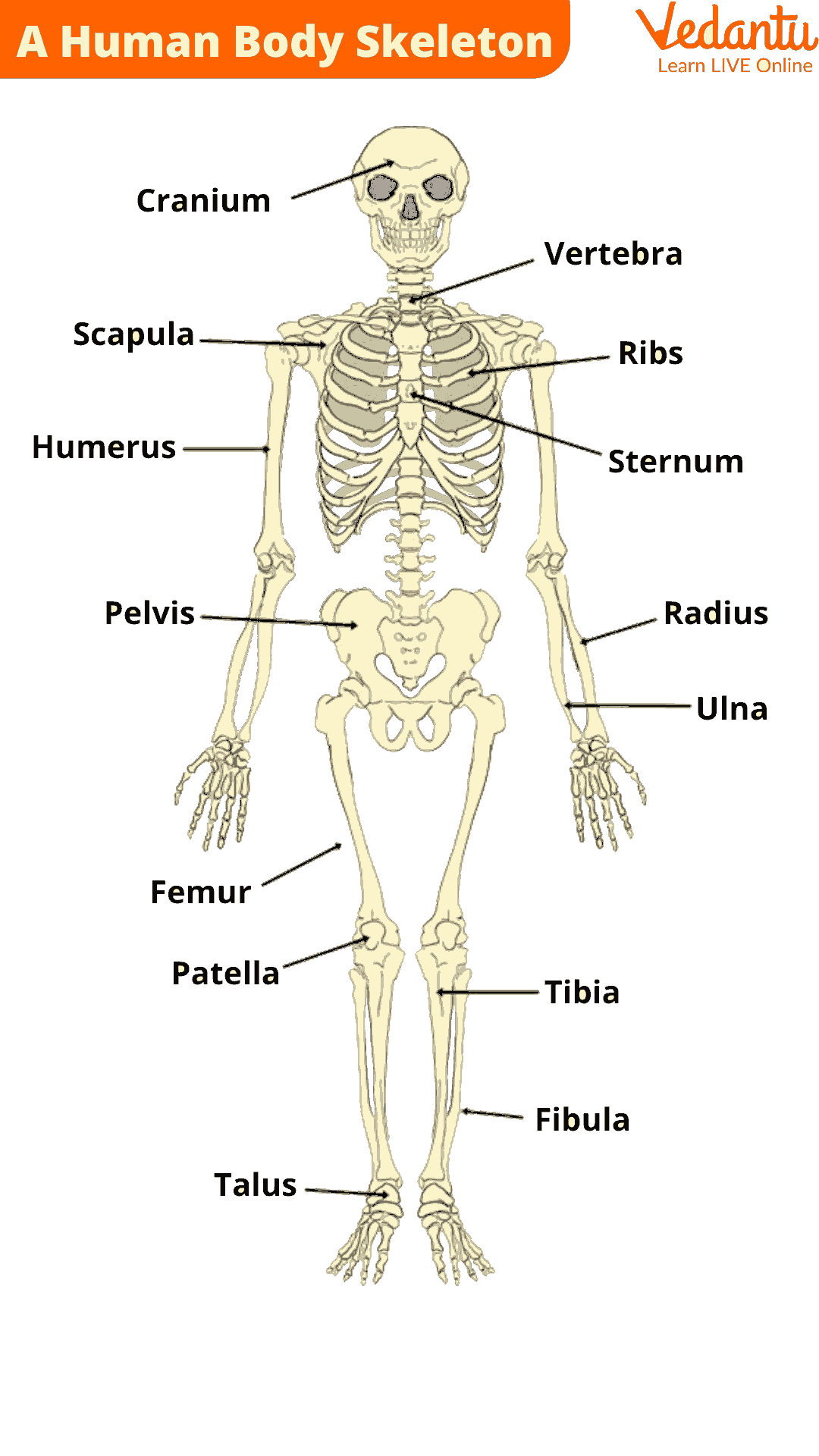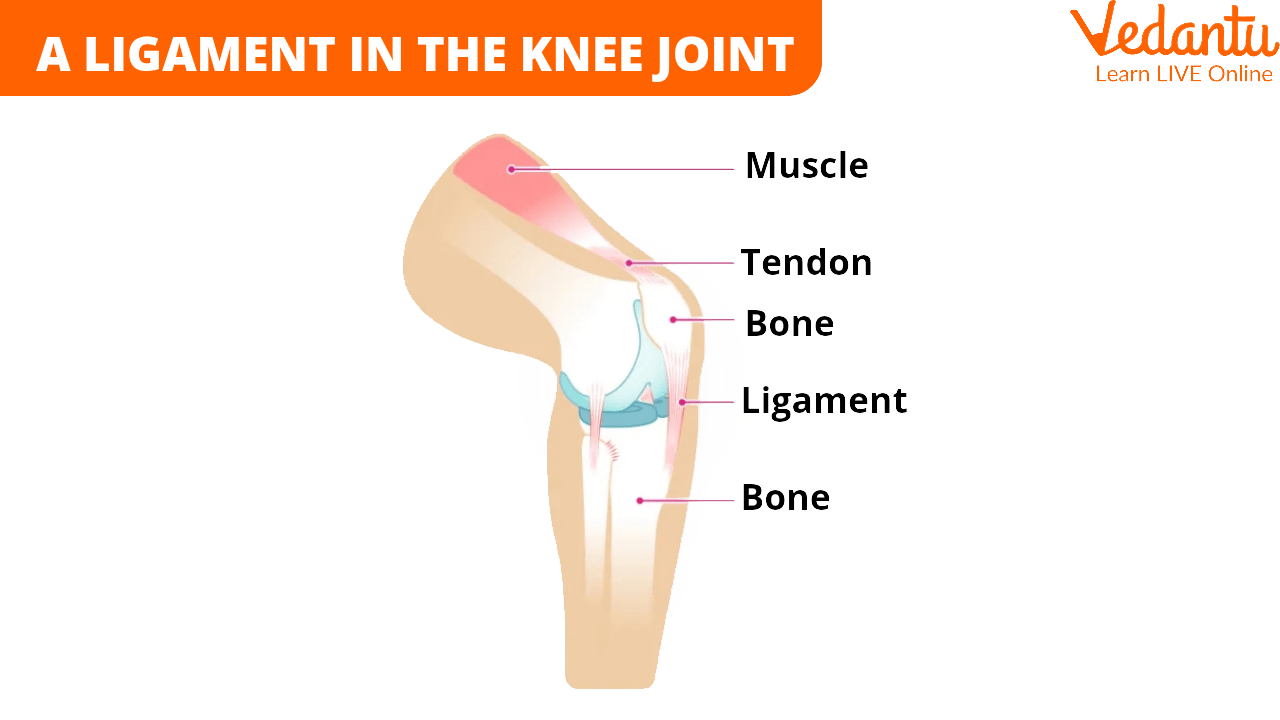




Introduction to Bones and Skeleton
The skeleton, made up of bones, is a solid framework to support and protect the body's soft organs. The skeleton supports the body as it resists the pull of gravity. When standing, the spine is supported by the massive bones of the lower limbs. The skeleton likewise shields the delicate bodily components.
The skeletal system, which is made up of the head, vertebral column, and rib cage, and the long bones, which are the limb bones, and the pectoral and pelvic girdles.
Vertebrates are creatures with a spinal column or backbone, including humans. They are supported by a strong internal framework built around a visible spine. The human skeletal system, which makes up 20% of the body weight, comprises bones, cartilage, ligaments, and tendons.

A Human Body Skeleton
Ligaments in the Human Body
Connective tissue with a lot of dense collagen fibres makes ligaments. They can be found in the body in various sizes and shapes. Arch-shaped ligaments are also visible.
Two bones are frequently joined by ligaments, especially in the joints. They hold the ends of two bones together or support the joint like strong, tightly linked belts or ropes. Doing this prevents the bones in the joint from twisting or separating too much and becoming dislocated.
Ligaments contribute to the body's stability, whether attached to bones or organs. These ligaments frequently flow across delicate organs like blood arteries or gland ducts. These structures are protected and kept from bending, twisting, or ripping.

A Ligament in The Knee Joint
Why Do Bones Have Joints?
They make the skeleton flexible for it to move. Bones are not directly in contact with one another in a joint. They are covered by fluid, membranes, and joint cartilage.
The purpose of joints is to allow two bones to move relative to one another. The bones that meet at the joint must be connected to function. The attachment must be both strong enough to hold the joint in place and flexible enough to allow movement of the bones.
The presence of an articular capsule between the Bone-to-bone joint defines synovial joints. A layer of articular cartilage covers the bone surfaces at joints to provide protection. The ligaments surrounding synovial joints frequently support and reinforce, limiting movement to prevent harm.
Fluid Between Bones
A sticky fluid found between your joints is called synovial fluid, or joint fluid. When you move your joints, the fluid softens the ends of the bones and reduces contact. A series of tests called a synovial fluid analysis looks for conditions that impact the joints.
A collection of fluid inside your bones is called bone marrow oedema. It may occur as a result of an injury like a fracture. Alternatively, it can be connected to a medical issue like arthritis, an infection, or a tumour.
Common places for fluid are the knees, hips, and elbows. Joint effusion is the medical term for when too much fluid collects around a joint in your body. Our joints may appear swollen if one is experiencing this issue.
Conclusion
Our body's skeletal system serves as a support system. It protects organs, enables movement, creates blood cells, gives the body its structure, and stores minerals. The term "musculoskeletal system" is another name for the skeletal system.
In addition to sustaining the body's structure and enabling movements, bones are an essential component of the musculoskeletal system. Where two bones meet is called a joint. Without them, the movement would not be possible since they enable the skeleton to be flexible. Our bodies may move in numerous ways because of joints.
FAQs on Skeleton and Bones
1. What is healthy for joints?
Omega-3 fatty acids, rich in seeds and nuts, are known to fight and help reduce stiffness in the connective tissue and joints. Almonds, walnuts, pine nuts, flax seeds, and chia seeds are all solid performers.
2. What is the name of the essential elements of the human skeleton?
The skeleton comprises separate and joined bones, supported and enhanced by cartilage, tendons, ligaments, and muscles. It is a structure to hold muscles in place, support organs, and safeguards vital structures like the brain, heart, lungs, and spinal cord.
3. How do joints and bones come together?
Ligaments connect bones and support joints. They are made of strong collagen fibres. Tendons join bones to muscles. Tendons are strong but not particularly elastic.









